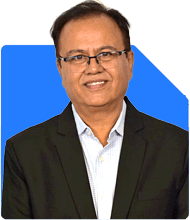I m 31 years now, having 1.8L P.M, want a corpus of 20Cr after 30 years, currently having 21L in PPF plan to continue till 60 with 1.5L PA, Have LIC which will give me 5Cr at 60 years, having NPS for last 3 years at 1L pm contribution, having PPF as per company norns. Also Mediclaim of 40L Please let me know what to be do to attain the objective
Ans: It's great to see your clear vision for the future and your diligent saving efforts. Your goal of a Rs 20 crore corpus after 30 years is ambitious but achievable with the right strategy. Let’s analyze and outline a comprehensive plan.
Assessing the Current Situation
You're 31, earning Rs 1.8 lakh monthly, with various investments:
Rs 21 lakh in PPF with Rs 1.5 lakh annual contributions.
LIC policy for Rs 5 crore at age 60.
NPS with Rs 1 lakh monthly contributions.
Employer-provided PPF.
Mediclaim policy with Rs 40 lakh coverage.
The Role of LIC Policy
While your LIC policy promises a substantial payout at 60, it ties up a significant portion of your funds with limited flexibility. Surrendering it can free up resources for potentially higher-yielding investments.
Surrendering LIC Policy
Surrendering the LIC policy involves discontinuing premium payments and receiving the surrender value. This value is lower than the policy's maturity value due to deductions. Before surrendering, assess the surrender value and consider any penalties.
Reinvesting in Mutual Funds
Reinvesting the surrender value into mutual funds offers several advantages:
Higher Potential Returns: Mutual funds, especially equity funds, historically offer higher returns over the long term compared to traditional insurance policies like LIC.
Flexibility: Mutual funds provide flexibility in investment amounts, redemption, and fund choices, allowing you to adapt to changing financial needs and market conditions.
Diversification: Mutual funds allow you to diversify across asset classes and fund types, reducing risk compared to a single insurance policy.
Importance of Professional Guidance
Consulting with a Certified Financial Planner (CFP) is crucial before surrendering the LIC policy. A CFP can assess your financial situation, evaluate the surrender value, and recommend suitable mutual fund investments aligned with your goals and risk tolerance.
Considerations Before Surrendering
Before making a decision, consider the following:
Surrender Charges: Assess any surrender charges or penalties associated with discontinuing the LIC policy. Calculate the net surrender value after deductions.
Tax Implications: Understand the tax implications of surrendering the LIC policy and reinvesting the proceeds into mutual funds. Consult with a tax advisor to optimize tax efficiency.
Risk Tolerance: Evaluate your risk tolerance and investment horizon. Mutual funds, especially equity funds, carry higher market risk compared to insurance policies. Ensure your investment strategy aligns with your risk profile.
Financial Goals: Review your long-term financial goals and assess whether reinvesting in mutual funds supports these objectives better than maintaining the LIC policy.
Rebalancing Your Portfolio
After reinvesting the surrender value into mutual funds, rebalance your portfolio to ensure optimal asset allocation. Consider factors such as age, risk tolerance, and investment horizon when reallocating assets across different fund categories.
Regular Monitoring and Adjustments
Regularly monitor the performance of your mutual fund investments and make adjustments as needed. Market conditions and your financial goals may change over time, requiring periodic portfolio reviews and rebalancing.
Conclusion
Surrendering your LIC policy and reinvesting the proceeds into mutual funds can potentially enhance your long-term wealth accumulation and financial flexibility. However, it's essential to carefully evaluate the surrender value, tax implications, and investment strategy before making a decision. Seeking guidance from a Certified Financial Planner ensures that your investment decisions align with your financial goals and risk tolerance.
Best Regards,
K. Ramalingam, MBA, CFP,
Chief Financial Planner,
www.holisticinvestment.in

























